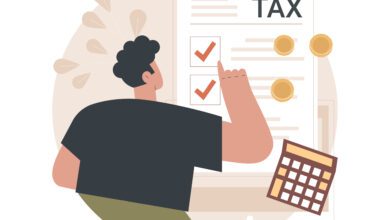4 Steps to Take in Your 20s to Get a Mortgage Easily

Your 20s are often the best times to buy a house, not just because of the longer tenures and lower EMIs, but the amount of money that is saved in the form of tax deductions, and rent payments which can now be converted into equity on your property just as you get started with your first job.
Even for recent graduates with student loans, and an entry level pay, getting approved for a mortgage is within reach, provided you take the right steps.
In this article, we go over a few essential steps to start preparing for a mortgage, and have a strong financial anchor in the form of an owned house before you reach your 30s.
1. Build Strong Credit
A strong credit score proves an individual’s creditworthiness when applying for a mortgage, and your 20s are perfect for working on this. Beyond just helping in qualifying for a mortgage, a strong credit score helps in getting lower APRs and better terms, adding substantial value to your personal finances in the long run.
There are a number of steps that can be taken in this regard. Firstly, make sure to adopt good habits, such as paying all your bills on-time, and in full, proving financial responsibility and trustworthiness. Following this, you can apply for a credit card, and then consciously use just 20% of the available credit limit, which again signals fiscal prudence, and discipline.
2. Save Money for Downpayment
In order to qualify for a mortgage, you need to have funds saved up to make a downpayment on the house. While this is no longer as high as 20% which was required in the past, most conventional loans require at least 3% down, which means on a $500,000 house, you will have to pay $15,000 upfront.
However, if you have the cash saved up to go the extra mile, consider exceeding the minimum down payment requirements to qualify for better terms, and APRs, while saving substantially on interest expenses. The excess equity can further be used for cash out refinancing or lines of credit to fund other investments or projects going forward.
Having a low loan-to-value ratio is preferred by most lenders as it provides them with a margin of safety, and as a result, borrowers willing to go this path can save plenty beyond just low interest rates, to even lower closing costs, and mortgage insurance premiums.
3. Look into Different Mortgage Lenders & Their Requirements
Mortgage lenders come in different shapes and sizes, with varying offerings for a wide range of borrowers. Whether you’re a recent graduate in your 20s, a single mother in your 30s, or a middle-aged professional, there are products, options, and services to suit most unique requirements.
As a result, it is essential to stay on top of the market, and recent trends on a regular basis, and the best way of doing so is by checking up on relevant offers at leading lenders. You can play the field by applying on various mortgage platforms, even the fifth largest retail mortgage lender in the US.
4. Consider Your Options
For young, first-time home buyers, there are plenty of options beyond the usual, conventional mortgages. This includes loans sponsored by the Federal Housing Administration (FHA), which requires a lower down payment, and even accepts individuals with a poor credit history.
There is also the Veteran Affairs Home Loan Guaranty Service, which helps young veterans, just returning from military service, to settle down and acquire a house with very beneficial terms.
Final Words
For 20-something Gen Z’ers and millennials, there is no shortage of options for getting a mortgage.
As long as you put in a bit of effort into getting your finances in order, and showcasing your fiscal responsibility, you can get a great starter house, along with a mortgage with favorable terms to kickstart your financial ascent over the coming decades.





